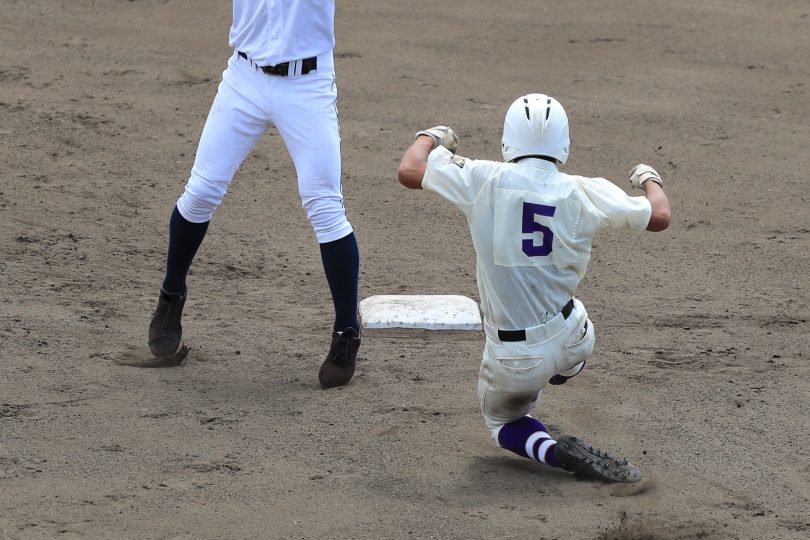The Situation:
There’s a runner at 1st base with two outs in the bottom of the 7th inning. The offense is trailing 5-2 and there’s a 2-2 count on the left-handed batter.
The Play:
The left-handed pitcher gets his sign and comes set. He delivers a fastball at least a ball’s length off the outside corner of the plate that the batter commits to. He reaches for the pitch with a disconnected swing and pokes a routine fly ball into left field between the shortstop and left fielder. The outfielder initially takes a step back before breaking in on the ball hard. He has a beat on it and looks like he will make the catch chest high coming in full speed. He gets to the ball but can’t control his bouncing vision and get under control. Surprisingly, he misses the ball and it lands with a thud and settles in the outfield grass. Seeing the mishap, the runner from first decides to pick up the pace and go for third. As the base runner rounds second, the shortstop, recovers the ball, picking it up off the ground and quickly firing a strike to the covering third baseman.
The Outcome:
The third baseman receives the throw and places the tag on the diving runner, who is out at 3rd by a step and a half. The inning and potential comeback are over with the third out being made a third base.
What Went Wrong:
The answer to this one is relatively obvious. The base runner makes one of the cardinal sins of baseball, making the third out at third base. Not only that, but in all likelihood he is out because he isn’t running hard all the way.
While most ball players know that the first and third outs are never to be made at third base, do you know why exactly why that’s the case? It all comes down to risk versus reward, and we’ll explore this for the situation described above. The risk and reward of getting to 3rd base with two outs is easy to put into numbers with a run expectancy chart. A run expectancy chart tells you the number of runs expected to be scored before the inning is over, based on the position of runners and number of outs. While we already know there are a number of ways to score from third base that aren’t possible from second, we also know that a vast majority of the time, runners who are on 2nd with 2 outs would score on the same play that runners on third with 2 outs score from. It turns out, using actual data from MLB games, we can now quantify the cost and benefit (in expected runs) of trying to get to 3rd with 2 out. Here is how it breaks down according the Run Expectancy Chart from 2016 (Fangraphs) and why it’s not worth trying:
The Run expectancy of having a runner on 2nd with 2 outs is .305 runs.
The run expectancy of having a runner on 3rd with 2 outs is .413 runs.
This means that the benefit of getting to 3rd safely is +.108 runs (.413-.305).
The cost of getting thrown out at third is -.413 runs, since the inning is over.
Are you willing to bet .413 runs for .108 runs? If so, you better be pretty certain that you will be safe since the chances of scoring form 2nd and 3rd with two outs are so similar. In fact, you would have to make it safely 5.16 times to justify being out once. We’ll let you be the judge. Here is video of the play described above. Do you think it was worth the risk or does Nunez need to read a few Think the Games?







